The legacy left by Teddy McCarthy was apparent in the offertory procession at his funeral Mass, where the 57-year-old’s casket – an affectionate photograph of the dual star carrying the inscription of “Teddy Boy” in a place of prominence – was adorned by flags of his two clubs, Sarsfields (hurling) and Glanmire (football) and that of Cork’s red and white.
Then, his two Celtic Cross winners’ medals – along with the Liam MacCarthy Cup and the Sam Maguire – were brought to the altar in tribute to a truly special sporting star, the only man to win All-Irelands in both codes in the same year in the history of the GAA.
Unique, one of a kind.
He was, for sure, an iconic sportsman and adored by Cork’s supporters for his on-field deeds and his off-field modesty. The opening of a book of condolences at Cork City Hall resulted in long queues while his funeral saw large crowds wishing to pay their respects.
READ MORE
There were comparisons made with the fact that another iconic Cork hurler Christy Ring had also died at the age of 57, and McCarthy’s sudden passing – having attended Cork’s winning All-Ireland hurling final – was met with shock throughout his native county and further afield.
McCarthy won four senior All-Ireland medals, two in hurling and two in football. However, it was his feat of winning both hurling and football in the same year – in 1990 – that earned him a special place.
A standout player with his clubs and school North Mon as a teenager, McCarthy made his intercounty debut for Cork’s senior footballers in 1985 and a year later with the county’s hurlers, where he showed an independent streak by going on holidays to the Canaries just a fortnight before the All-Ireland final with Galway.
“That was the first holiday I ever had away. I was only 20. I hadn’t made the team for the Munster final. If I had stayed, there was no guarantee I was going to be picked,” McCarthy would recall. He was picked and claimed his fist Celtic Cross. He added to his collection in 1989 when he kicked Cork’s final point in the All-Ireland football win over Mayo and also earned the Texaco Footballer of the Year award.
But his exploits in 1990 set him apart. What made his achievement in winning All-Ireland winners’ medals in hurling and football in the one year was that he had spent all of July with his foot in plaster after suffering an ankle injury in a challenge game.
McCarthy returned to training in August and would score three points from centrefield in the hurling final win over Galway (5-15 to 2-21) and, a fortnight later, he returned to Croke Park where he played at wing forward in Cork’s 0-11 to 0-9 defeat of Meath. When the final whistle sounded, the history-maker ran to the dressingroom as he didn’t want to take attention from his team-mates.
On his death, Cork football coach Billy Morgan commented on McCarthy’s remarkable athleticism, “He was great in the air. I would put him in the same league as a fielder as Mick O’Connell who I would think would admire the way Teddy fielded balls. But his kicking was good too, and he had a great engine to get up and down the pitch. In fact, his all-round game was very good.”
Hurling trainer Gerald McCarthy echoed those sentiments, “He was a good all-round player, and he was very wholehearted. He would keep going all day for you. He gave it everything to the final whistle.”
Teddy McCarthy was a dual star who was one of a kind, his feats of 1990 setting him apart from all others, but the GAA world in 2023 mourned many others who brought honour and glory to their counties and entertained one and all.
Among them were Seán McCormack (goalkeeper on Meath’s 1967 All-Ireland winning football team), Joe Young (a Dub who won an All-Ireland football final with his adopted Galway in 1955), John Kelly, a hurler and referee (who won an All-Ireland hurling medal with Tipperary in 1971), Jimmy Cooney, also a hurler-turned-referee (who was part of the famous Galway team which won the All-Ireland hurling championship in 1980) and Jimmy Duggan, another Galway hurler once described as the best “pound for pound” player in the country,
Séamus Leydon, a vital member of Galway’s three-in-a-row All-Ireland football team in 1964-1966, passed in October.
Just before Christmas, legendary Offaly hurler Johnny Flaherty – who etched his name in the annals of GAA history by scoring a handpass goal in the closing stages of the 1981 All-Ireland final win over Galway – passed away after a short illness. He was 74.
Flaherty made a total of 66 appearances for Offaly – 40 league and 26 championship – and his influence on Offaly hurling was recalled on his death by country chairman Michael Duignan.
“Johnny Flaherty is one of the great legends of Offaly GAA who made a very special contribution to hurling in the county.
“His famous goal in the 1981 All-Ireland final is one of the truly iconic moments in the GAA as Offaly finally joined hurling’s elite.
“It was brilliant that Johnny’s perseverance in the Offaly colours, through good times and bad, would eventually bring the reward that he and his team-mates deserved. That 1981 triumph inspired a new generation of Offaly hurlers who went on to achieve success at all levels.”
Bobby Charlton (1937-2023)
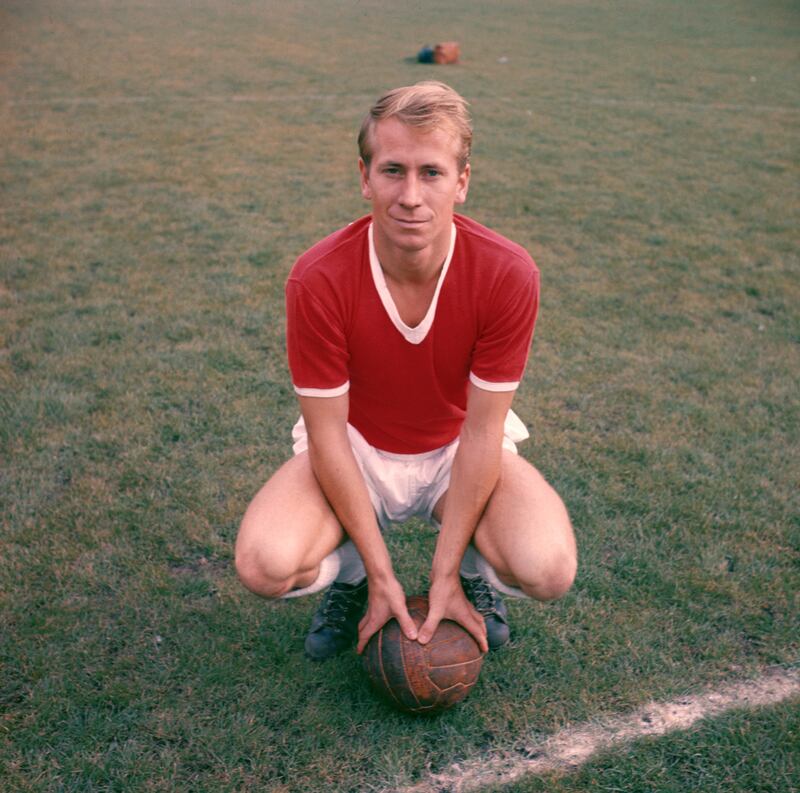
A survivor of the Munich air disaster in 1958 and then the heartbeat of Manchester United – the Busby Babes – in a storied club career, Charlton was an attacking midfielder and striker who was an integral part of England’s World Cup final win over West Germany in 1966.
Born in the mining village of Ashington in Northumbria, Charlton – whose older brother Jack was a centre back for Leeds United and England and spent a decade managing Ireland – was a prolific scorer at schoolboy level which attracted the attention of Manchester United. He signed for the club in his mid-teens and spent 17 years at the club, winning three English League titles and an FA Cup. He also lifted the European Cup for the club in 1968.
The first of those league titles came in 1957 when the Busby Babes, a team of young players assembled by Matt Busby, looked poised to dominate for years. Then, in 1958, the terrible Munich air disaster took place when the squad’s flight back from a European Cup tie in Belgrade made a refuelling stop and crashed in icy conditions, killing 23 passengers including eight Manchester United players.
Charlton, still strapped to his seat, was thrown out of the wreckage. Only 20 years of age at the time, Charlton’s often subdued demeanour was invariably ascribed to the disaster.
A prolific goalscorer for club and country, Charlton’s record haul of goals for England (49) and Manchester United (249) was eventually surpassed by Wayne Rooney. As a player, Charlton was renowned for his thunderous long-range shots, stylish passing and exemplary on-field conduct.
Rosemary Smith (1938-2023)
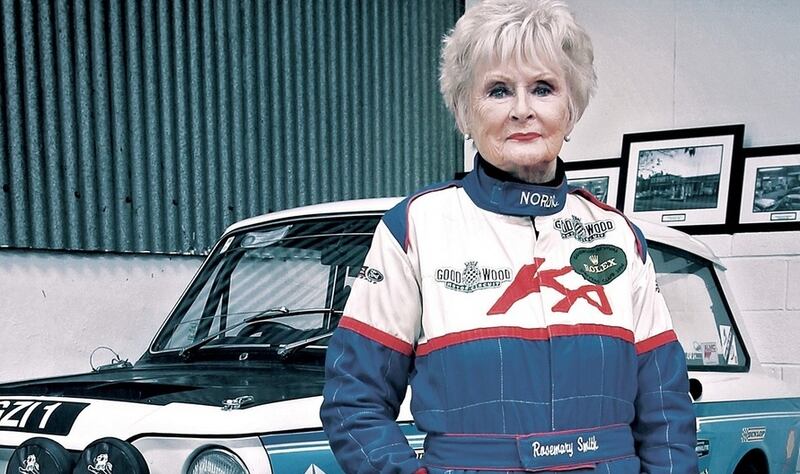
A trailblazer and pioneering force for women in motorsport, Rosemary Smith – who died aged 86 – was to the fore of rallying in the 1950s and 1960s, one of her career highlights coming in the Dutch Tulip Rally of 1965 (the equivalent of a World Rally Championship in today’s sporting hierarchy), the only woman ever to win the prestige event.
Smith competed in eight Monte Carlo rallies and also finished some of the most arduous long-distance events, among them the London-Sydney rally (in 1968) and the 1970 London-Mexico rally and competed in endurance motorsport events, which included the 12 Hours of Sebring to Goodwood Revival.
In 2017, aged 79, Smith became the oldest woman to drive a current spec Formula 1 car, as she successfully tested the Renault Sport F1 car (500bhp) at Circuit Paul Ricard in southern France. Smith said, “It was the most exhilarating, terrifying, fantastic [time] and I would love to do it all over again. I had never driven a Formula 1 car except Formula Atlantic many years ago. It was unbelievable.”
Smith won an Irish Times Sportswoman Lifetime Achievement award in 2013 and was inducted into FIVA (Federation International des Vehicules Anciens) in 2022.
Syd Millar (1934-2023)
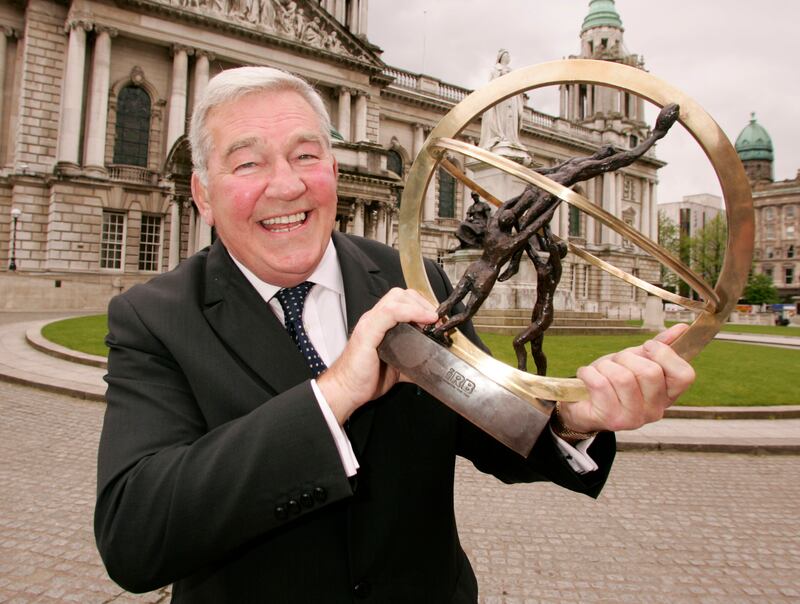
On his death, at the age of 89, the British and Irish Lions issued a statement that captured the impact of the Ulsterman on rugby’s great touring side.
“There aren’t many people who have given as much to the Lions, or our sport, as the great Syd Millar. Three tours as a player, one as a series-winning coach and another as a manager. He also served as a committee member, selector and chairman. It all adds up to an amazing nine tours over six decades.”
The IRFU’s chief executive Kevin Potts described Millar as a “titan of rugby union and a visionary”.
The man from Ballymena in Co Antrim was, indeed, a legend of the sport and had an influential role in rugby union for more than 50 years – in Ireland and worldwide – as a player, coach and administrator.
A prop, he played 37 times for Ireland between 1958 and 1970 and nine times for the Lions on three tours in the 1950s and 1960s, before coaching the Lions on their unbeaten tour of South Africa in 1974 and then as manager on the trip to South Africa in 1980.
Millar also coached Ireland between 1973 and 1975 and was Ireland’s manager at the inaugural 1987 World Cup. As an administrator, he served as Ulster Branch president, IRFU president in 1985 and the chairman of the Lions from 1999 to 2002. He was appointed chairman of the International Rugby Board (now World Rugby) in 2003 and served in that position until 2007.
Hugh Russell (1959-2023) and Jim McCourt (1944-2023)
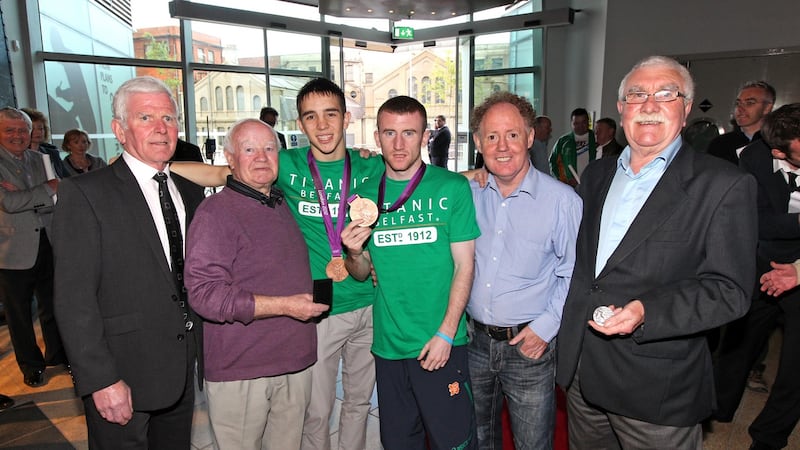
Two boxers, from different times, but linked by their great achievements – both Olympic medallists – and by their Belfast roots.
McCourt was Ireland’s only medal winner in the 1964 Games in Tokyo, where he won a bronze medal in the lightweight division. His loss to USSR’s Velikton Barannikov in the semi-final was hotly disputed and the Belfastman would subsequently defeat the gold medallist, Jozef Grudzien of Poland, in an international meet.
His other big international successes came in the 1965 European Championship (another bronze) while he won gold in representing Northern Ireland in the 1966 Commonwealth Games in the light-welterweight division.
Russell – who became an award-winning photographer with the Irish News – was known as “Little Red” for his mop of red hair and won his bronze medal in the flyweight division at the 1980 Olympics in Moscow.
His route to a medal saw the 5-feet 4-inch Belfastman beat much taller opponents (Iraq’s Samir Khiniab 5-0, Tanzania’s Emmauel Mlundwa 5-0 and six-feet one-inch North Korean Yo Ryon-Sik 3-2) before he lost out to Bulgaria’s Peter Lesov in the semi-final.
Russell turned professional after his Olympic feats and held the British bantamweight title in 1983 and the British flyweight title from 1984 to 1985.
Joe Hackett (1925-2023)
A true all-rounder, Joe – known as JD – represented Ireland in tennis and Leinster in both rugby and squash.
Hackett, from Dublin, won numerous underage Irish titles in tennis, on hard court and grass, and caused something of a sensation as a 16-year-old when reaching the final of the Irish senior championship, losing to Cyril Kemp in the final.
That talent would manifest in a long career on the courts, which included numerous national titles – one of his favourites being in partnering Matt Murphy to the doubles title where the final set went to 22-20 – and representing Ireland in the Davis Cup (from 1950 to 1961). He would later serve as non-playing captain for Ireland and also internationally as a referee.
Joe competed in Wimbledon for nine years and also played in the French Open at Roland Garros and the US Open at Forest Hills.
In rugby, he won two Leinster Senior Cups: with UCD – where he had the distinction of kicking the winning drop goal and which brought with it the distinction of being the last Irish player to be credited with four points for the feat – and, later, with Old Belvedere. He played eight times for Leinster in rugby interprovincials.
Kathy Whitworth (1939-2023)
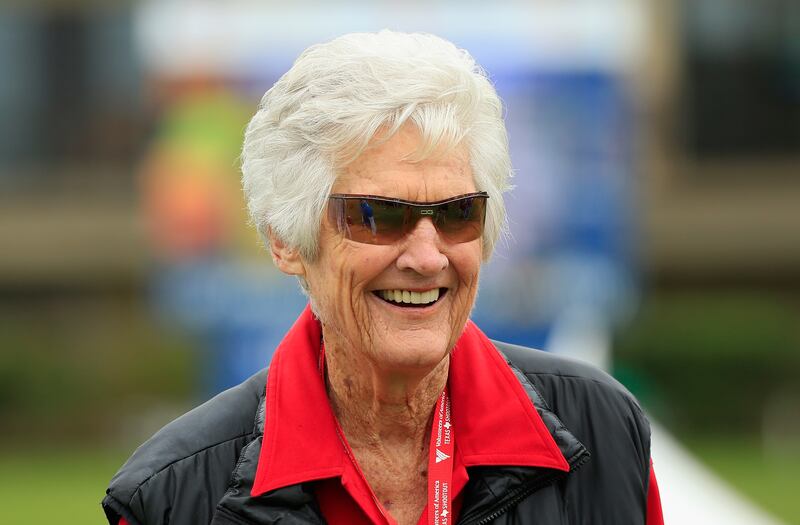
A standout tennis player in her youth, Whitworth’s conversion to golf – as a 14-year-old – would lead to a stellar professional career which saw her win a total of 88 official tournaments (including six Majors) on the US Professional Golf Association circuit. That total is the most won by any professional, male or female (Sam Snead and Tiger Woods have each won 82 times!)
Whitworth, a Texan, was at her peak between 1965 to 1973 when she was the PGA women’s player of the year seven times and the top money winner on the LPGA Tour eight times. She was also named the Associated Press’s female athlete of the year in 1965 and 1966 and she was inducted into the World Golf Hall of Fame in 1975.
Another notable distinction credited to Whitworth is that she became the first professional women’s golfer to pass the one million dollar mark in prize money, which she did in 1981. Whitworth won 88 times on what became known as the LPGA Tour and a further 10 unofficial tournaments worldwide.
- Sign up for push alerts and have the best news, analysis and comment delivered directly to your phone
- Find The Irish Times on WhatsApp and stay up to date
- Our In The News podcast is now published daily – Find the latest episode here





















